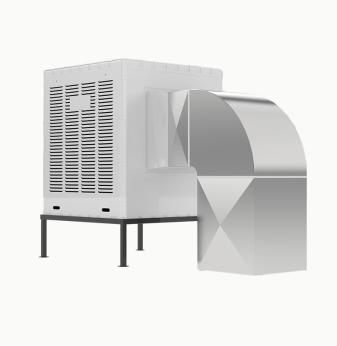Designing Reliable Edge Inference Pipelines with TensorRT, OpenVINO, and Quantized Models on Low-Power SoCs

Introduction: The Shift from Cloud to Edge AI
As AI capabilities expand into the physical world, edge inference has become essential. Whether it’s smart cameras, industrial sensors, or portable medical devices, many systems now need to run machine learning models locally — without relying on cloud infrastructure. This is especially true for use cases where latency, bandwidth, privacy, or connectivity constraints make cloud inference impractical.
To enable this, engineers must design robust, low-latency inference pipelines optimized for the resource constraints of low-power SoCs (System-on-Chip). In this article, we explore how to do just that using industry-standard tools like TensorRT and OpenVINO, and by deploying quantized models that maintain accuracy while slashing memory and compute requirements.
Edge Inference Pipeline Architecture
An edge inference pipeline typically involves:
- Sensor data acquisition (camera, audio, IMU)
- Preprocessing (resizing, normalization, filtering)
- AI model inference (CNN, Transformer, etc.)
- Postprocessing (thresholding, labeling, tracking)
- System response (actuator, display, message)
Each stage must be fast, predictable, and resource-efficient.
Long-tail keyword example: "What is an edge AI inference pipeline and how is it different from cloud AI?"
Answer: An edge inference pipeline processes sensor data locally on the device to generate insights in real time. Unlike cloud AI, it doesn't rely on network communication, which reduces latency and enhances reliability, privacy, and energy efficiency — especially critical for portable or real-time applications.

Choosing the Right Inference Framework
1. TensorRT (for NVIDIA platforms)
- Highly optimized for NVIDIA GPUs and Jetson SoCs
- Converts trained models into INT8 or FP16 for fast execution
- Offers layer fusion, kernel auto-tuning, and batch optimizations
- Ideal for: AI cameras, robotics, automotive perception
2. OpenVINO (for Intel platforms)
- Supports Intel CPUs, VPUs (like Myriad X), and FPGAs
- Optimized for low-power edge inferencing
- Includes Model Optimizer and Inference Engine for deployment
- Ideal for: industrial edge servers, smart vision devices
3. ONNX Runtime (cross-platform)
- Interoperable with multiple frameworks (PyTorch, TensorFlow)
- Deploys on ARM, x86, and mobile hardware
- Supports model quantization and acceleration backends
- Ideal for: heterogeneous hardware or vendor-agnostic systems
Long-tail keyword example: "Should I use TensorRT or OpenVINO for edge AI deployment?"
Answer: Use TensorRT if you're targeting NVIDIA Jetson or GPU-based edge platforms; it offers better performance through hardware-specific optimizations. OpenVINO is more suitable for Intel-based systems with CPU/VPU architectures. Choose based on your target hardware and toolchain compatibility.
Model Quantization and Compression
Quantization reduces model size and speeds up inference by lowering numerical precision — typically from FP32 to INT8 or UINT8. This is vital for fitting models into:
- On-chip SRAM
- Small flash memory footprints
- Real-time processing budgets
Quantization techniques:
- Post-training quantization (simpler but less accurate)
- Quantization-aware training (maintains higher accuracy)
Framework support:
- TensorFlow Lite: built-in quantization tools
- PyTorch: torch.quantization module
- ONNX: dynamic and static quantization flows
Long-tail keyword example: "What is quantization in machine learning and why is it important for edge devices?"
Answer: Quantization transforms high-precision neural network weights (e.g., FP32) into lower-precision formats (e.g., INT8), reducing model size and compute demands. This is crucial for running AI on edge devices with limited memory and power.
Optimizing Pre- and Postprocessing Stages
Don’t underestimate preprocessing — it often accounts for 30–50% of total latency. Techniques:
- Use NEON or SIMD-optimized routines on ARM
- Minimize data copies and memory allocation
- Fuse preprocessing into model graph if possible (e.g., resize/normalize inside model)
Postprocessing can also be accelerated:
- Use lookup tables for softmax or sigmoid functions
- Optimize NMS (non-max suppression) in detection models
- Limit operations to bounding box regions only
Real-Time Constraints and Determinism
For edge AI in robotics, industrial control, or automotive, deterministic inference is crucial. Tips:
- Avoid dynamic memory allocation at runtime
- Use fixed input shapes and static graphs
- Profile with real-world data and simulate worst-case loads
Hardware Acceleration Options
- NVIDIA Jetson Nano/Orin: TensorRT + CUDA cores
- Intel Movidius (Myriad X): OpenVINO VPU backend
- Google Coral Edge TPU: Quantized model acceleration
- ARM Cortex-A + Ethos-U: Microcontroller-level inferencing
Long-tail keyword example: "What hardware is best for real-time edge AI with low power consumption?"
Answer: Low-power SoCs like Google Coral, Intel Movidius, and NVIDIA Jetson Nano are ideal for real-time AI at the edge. They balance compute power with efficiency and support optimized toolchains like TensorRT or OpenVINO.
Testing and Validation Strategies
- Use test datasets that match field conditions (lighting, motion, occlusion)
- Benchmark full pipeline latency from input to output
- Monitor temperature and power during inference
- Validate inference consistency under CPU/GPU throttling
Summary: Building Reliable AI at the Edge
A well-designed edge inference pipeline makes the difference between a prototype and a production-ready system. By leveraging TensorRT, OpenVINO, quantization, and hardware-specific acceleration, you can deploy real-time AI in embedded systems with high reliability and efficiency.
Why Promwad?
Promwad helps companies move AI workloads from cloud to edge. Our services include:
- Edge AI pipeline architecture and implementation
- Model quantization and compression
- Integration with TensorRT, OpenVINO, and ONNX
- Real-time optimization on embedded SoCs
- Validation for thermal, latency, and power constraints
Let’s bring your edge AI to life — from sensor to system response.
Our Case Studies in This Industry








